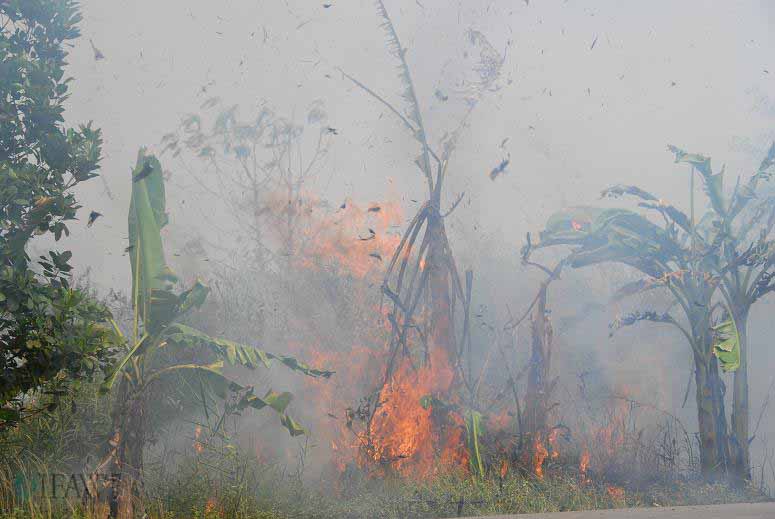
We Didn’t Start the Fire….Or Did We?
This summer international headlines have frequently been occupied by news of wildfires raging all over the globe.
Fires in the Amazon Rain Forest have captured the majority of attention. Ahead of the G7 Summit held in France this past August the Amazon wildfires were a high priority that elicited statements from prominent world leaders such as French President Emmanuel Macron, British Prime Minister Boris Johnson, and US President Donald Trump. The fires were such a high priority that the German Environment Minister Svenja Schulze stated a trade deal between the EU and South American states “cannot be justified without guarantees that the rainforest will be protected.”
Central Africa was also in the news as wildfires near the Congo Basin forest, the second largest tropical rainforest in the world, sprang up as a means of clearing land for farmers.
The most recent occurrence of wildfires making international news occurred last week. Across the world from both the Amazon and the Congo Basin forest, wildfires engulfed Indonesia.
Why Are Wildfires Burning?
In mid-September a series of wildfires made their way through Indonesia. Hundreds of wildfires were ablaze on the Indonesian islands of Borneo, the largest island in Asia and third largest island in the world, and Sumatra, the largest island located entirely in Indonesia and the sixth largest island in the world.
According to Indonesian officials, 80 percent of the fires were intentionally set as a means of clearing land so that palm plantations can grow oil palms – a very valuable cash crop. The value of oil palm to Indonesia is hard to overstate. The plant can grow for decades, thus providing employment to poor and rural peoples, and is very valuable, producing more oil/hectare can other oilseed crops. A spokesman for Indonesia’s disaster emergency agency stated that intentionally set wildfires are the “cheapest method and conducted by many people.”
The fires being lit intentionally does not mean the fires are under control. In an effort to reign in the fires the Indonesian government has deployed more than 50 firefighting aircraft and over 5,500 personnel. The effort has been largely ineffective. With the rainy season not expected until October, the fires will continue to burn until mother nature intervenes, despite the best efforts of the Indonesian government to keep the burning under control.
Wildfires and Climate Change
The wildfires burning their way through Indonesia have a significant impact on climate change for three reasons: (1) wildfire induced deforestation causes CO2 to be released into the atmosphere, (2) fires also destroy carbon-sucking vegetation that helps fight climate change and (3) wildfires are only getting worse as climate change continues.
First, the burning of trees at this scale – almost 3,000 hotspots have been identified – actively contributes to climate change by releasing large quantities of carbon dioxide into the atmosphere. When wildfires spread across Indonesia just four years ago, the estimated total output of CO2 released into the atmosphere was roughly equivalent to the annual carbon dioxide emissions from the entire state of Japan. Four years ago, the scale was much larger than the current level of fires in the south-east Asian country, but the lesson remains the same.
Second, the climate change fighting powers of forests is well known – the Amazon and Congo Basin forests are even referred to as the Earth’s “lungs” because of their ability to produce oxygen and absorb carbon dioxide. However, as wildfires continue to run through the forests of Indonesia – as well as Brazil – vegetation that absorbs carbon dioxide is being destroyed. In the case of Indonesia more than 800,000 acres of land have been destroyed, a size larger than the state of Rhode Island.
Finally, wildfires in Indonesia at this time of year are a rather common occurrence, however this year the fires are worse due to the “particularly dry” conditions. Despite the fires being man-made, hotter weather and drier conditions make vegetation more susceptible to burning. Rising temperatures evaporate moisture from the ground, which in turns dries out the soil, and makes trees, shrubs, and other forms of vegetation more likely to burn. As climate change continues and conditions become hotter and drier around the world, wildfires will become a much more common occurrence.





